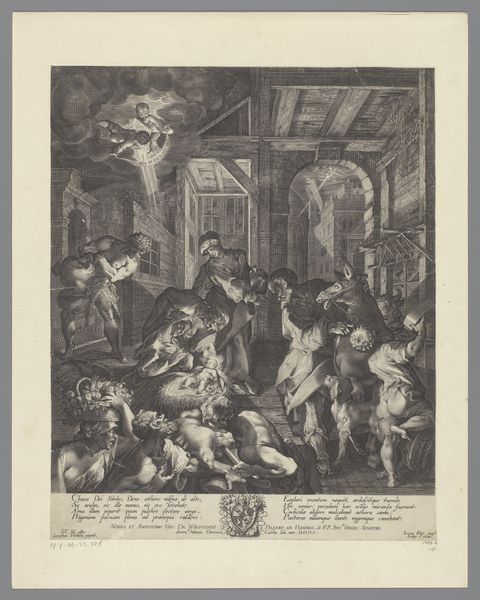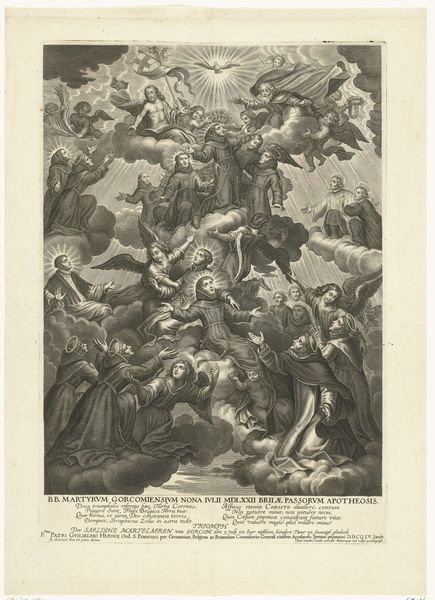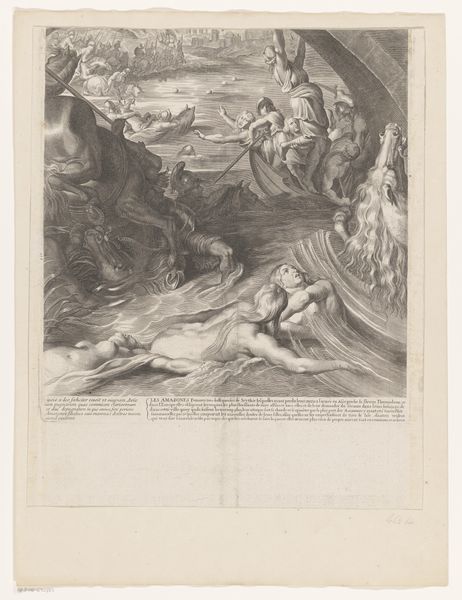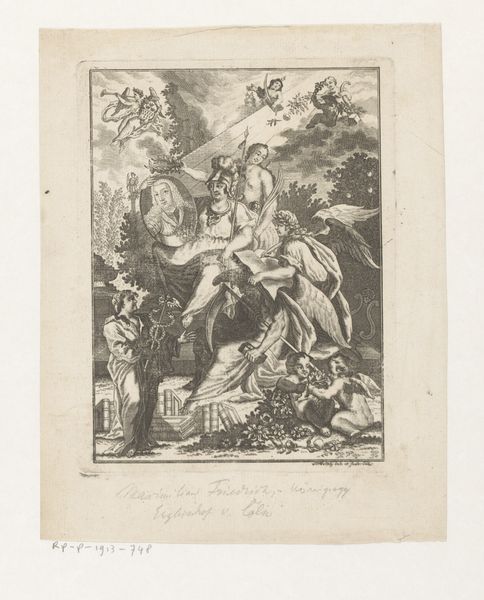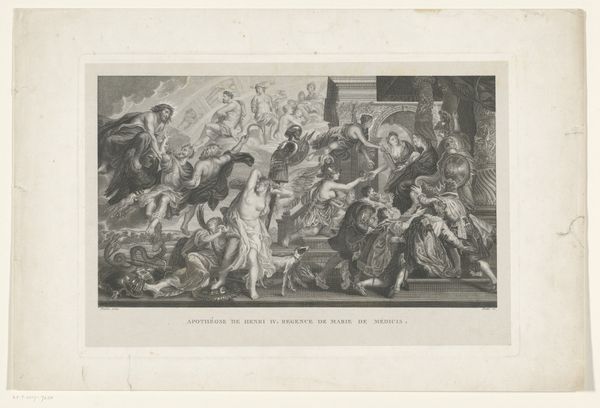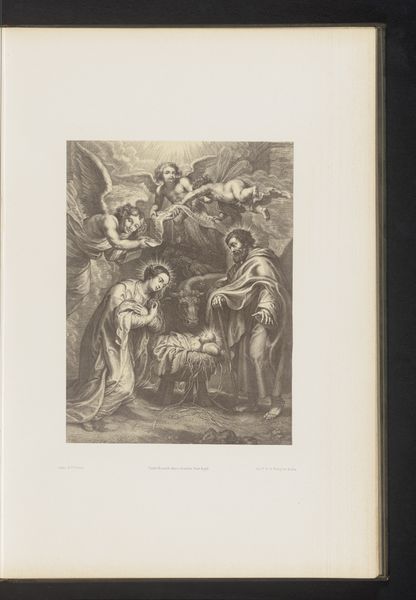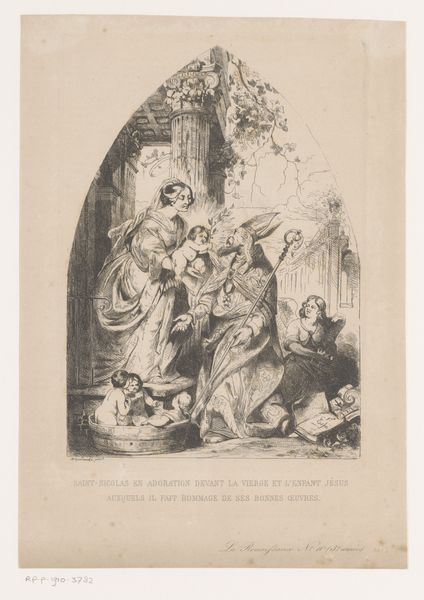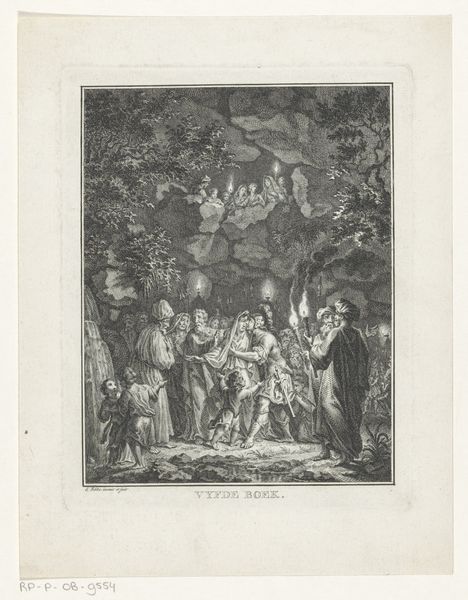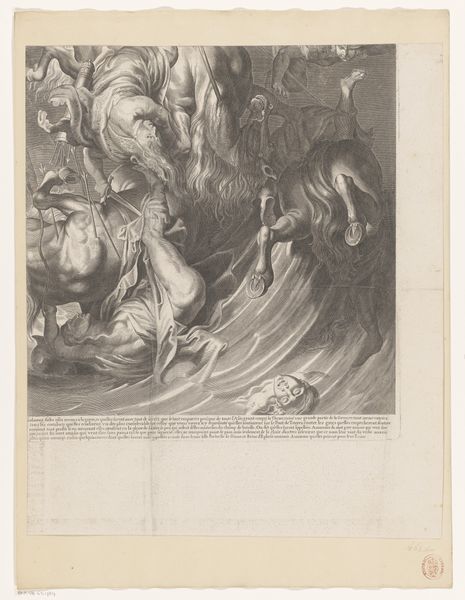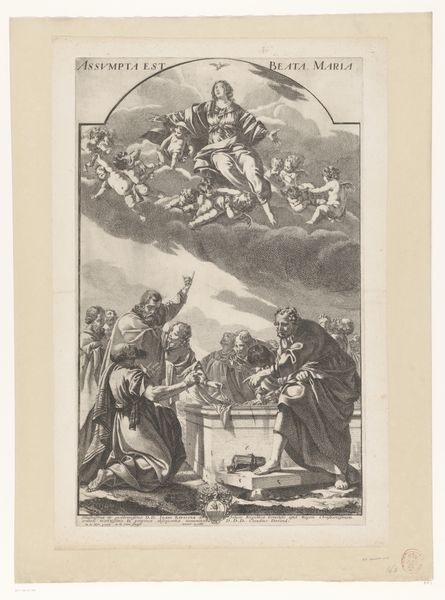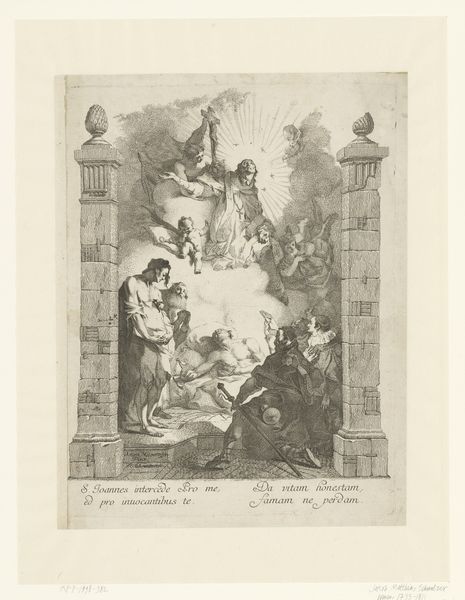
engraving
#
narrative-art
#
baroque
#
old engraving style
#
figuration
#
history-painting
#
engraving
Dimensions: height 507 mm, width 328 mm
Copyright: Rijks Museum: Open Domain
Curator: Right, let's dive in. Here we have Pierre Daret’s engraving, “Geboorte van Christus,” from 1639. It’s currently residing at the Rijksmuseum. Editor: Well, right away, there’s such an amazing quality in this print; I think it is incredibly detailed with its black and white line work that really pops. It does seem slightly staged or overly composed though—do you feel the same? Curator: A little bit, perhaps that's just because it is staged and performed on copper before it makes its way to us here! I mean, look at how the baroque elements inform Daret’s construction of the scene: theatrical lighting, dramatic composition. And how it all comes down to process and the materials that are used to bring the scene to life, not just the message itself. Editor: You’re spot on! It makes you think about how different types of artmaking – something seemingly more immediate like painting versus a meticulous print like this—are consumed differently and thought to signify “high” and “low” culture. Even though it is made from an industrial method that relies so heavily on skill. It gets me thinking... what even constitutes "Art" nowadays? I almost prefer seeing the mark-making of something that feels human rather than technically savvy and flawless! Curator: I see your point. Speaking of which, those cherubic figures hovering above—look how their bodies and the soft drapery play out. Are they actually hovering? Do they feel believable, like flesh-and-blood entities? They certainly aren't "perfect"–aren't we glad that Daret didn't erase that humanness by perfecting his rendering of divine intervention? Editor: Definitely! Though if we pull back, I keep landing on how much Daret relied on a particular social and material structure to produce it; from workshop to patrons. Who was he making it for? What function was it to serve? Did he intend to celebrate religious spectacle, or was it to engage more directly in cultural work by promoting it? So many hands and labor in a piece that celebrates something divine. Curator: Ultimately it seems impossible to fully unpack something so rich. Its message shifts and its power resonates with each viewer through the years; to see the scene through your lens offers me a whole new perspective! Editor: And considering all those decisions and constraints really sharpens my attention to just how much ingenuity is embedded within this very baroque piece! It almost redeems the baroque for me... almost.
Comments
No comments
Be the first to comment and join the conversation on the ultimate creative platform.
